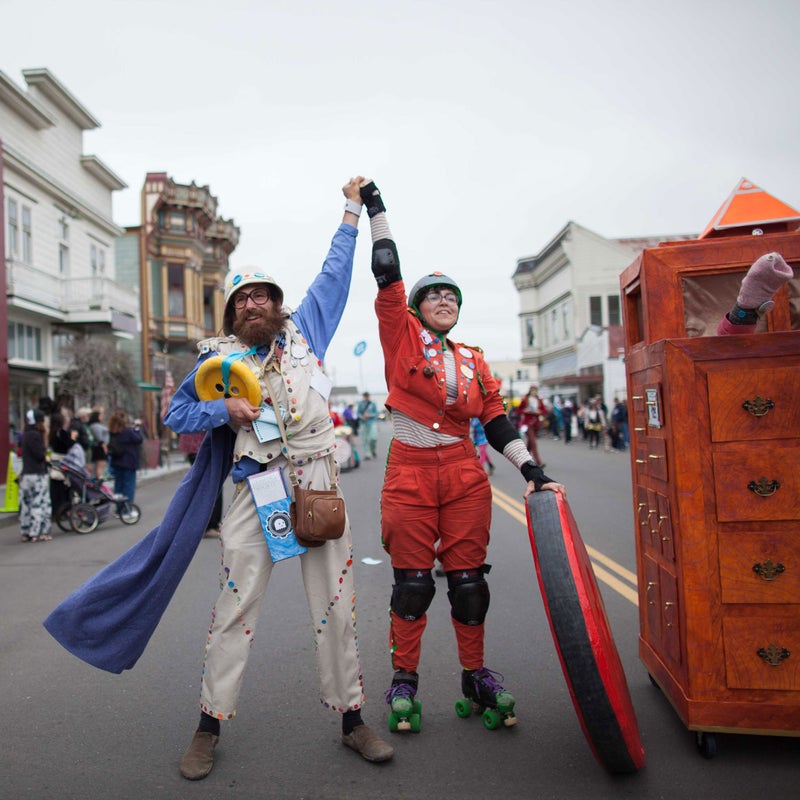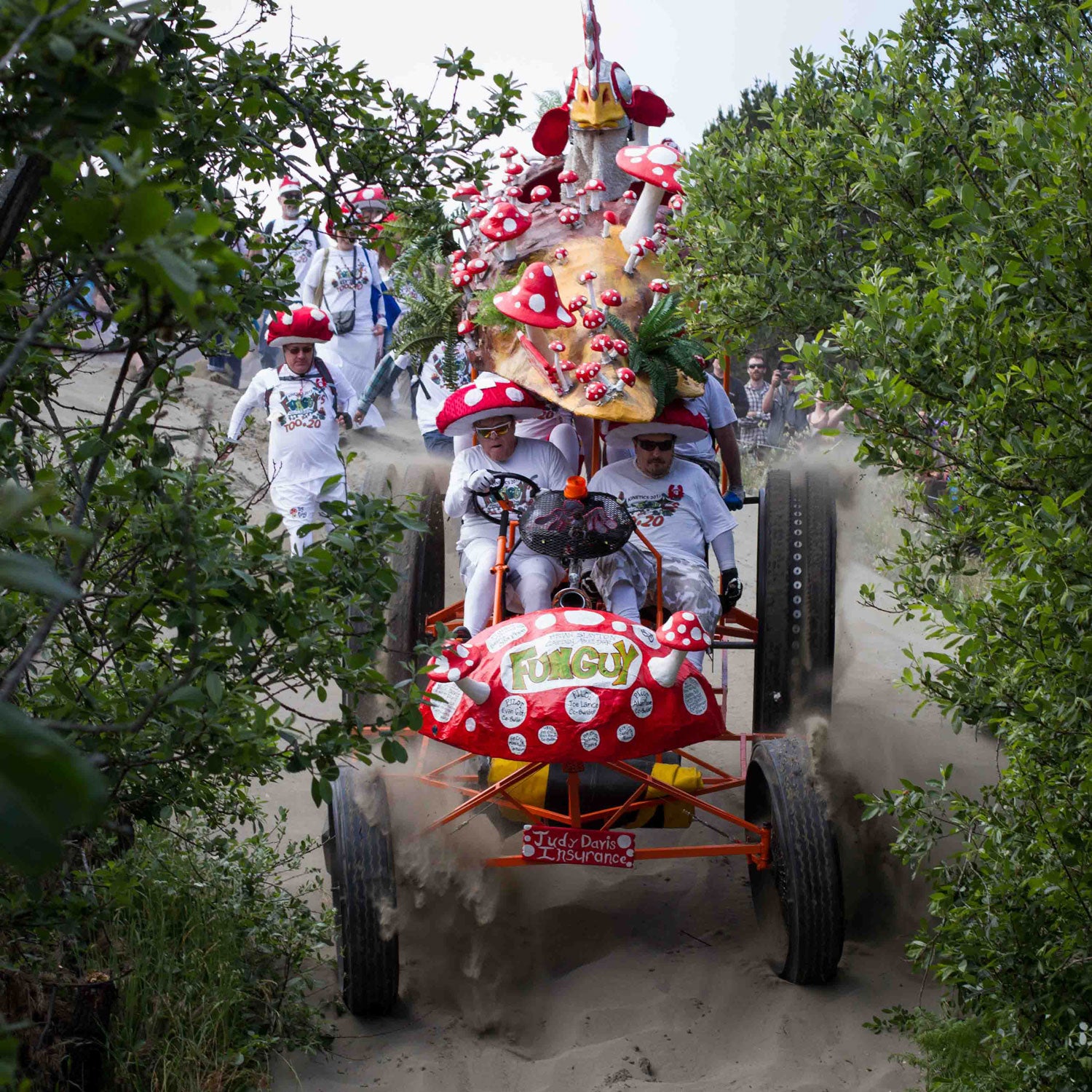Every year, an elite group of racers gathers in the small Northern California town of Arcata. They’re not runners. They’re not cyclists. They’re not drivers. They’re much stranger than that.
Their competition: the Kinetic Grand Championship, a grueling three-day, 42-mile schlep over sand, water, mud, and pavement. Their steeds: bizarre amphibious human-powered vehicles. So sit back, buckle up, and enjoy the wild, crazy ride.
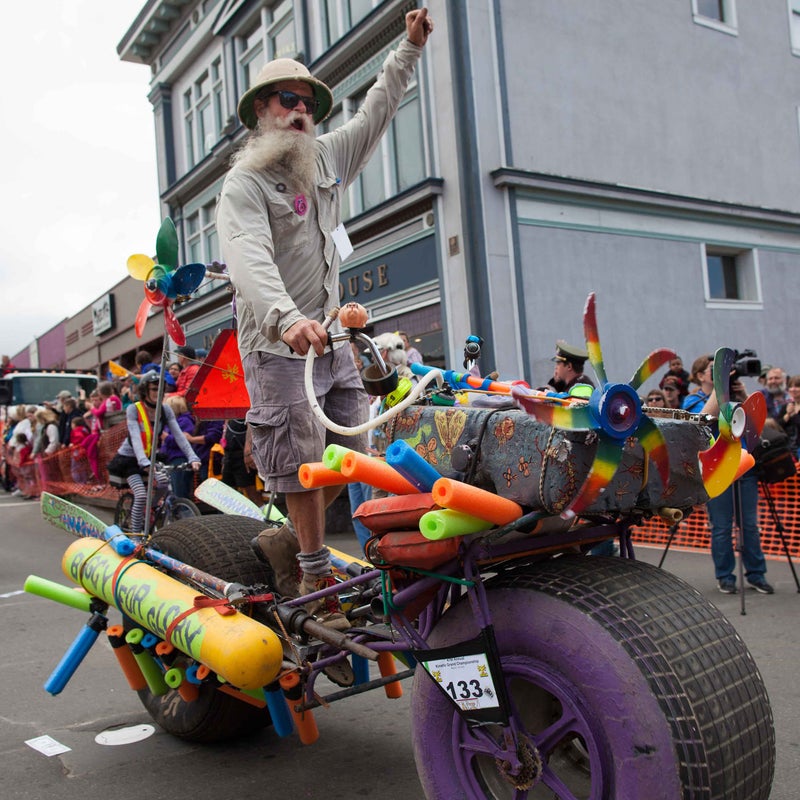
Every year, an elite group of racers gathers in the small Northern California town of Arcata. They’re not runners. They’re not cyclists. They’re not drivers. They’re much stranger than that.
Their competition: the Kinetic Grand Championship, a grueling three-day, 42-mile schlep over sand, water, mud, and pavement. Their steeds: bizarre amphibious human-powered vehicles. So sit back, buckle up, and enjoy the wild, crazy ride.
(Dylan Silver)Founded by artist Hobart Brown in 1969, the Kinetic Grand Championship is now a Northern California institution. Once racers leave the Arcata Plaza, they head for the Samoa Dunes. Teams often switch or alter their wheels to ride on top of the soft sand. Here, Shell’s Angels, an oyster-shaped two-man craft, cruises along the beach, flanked by its pit crew.
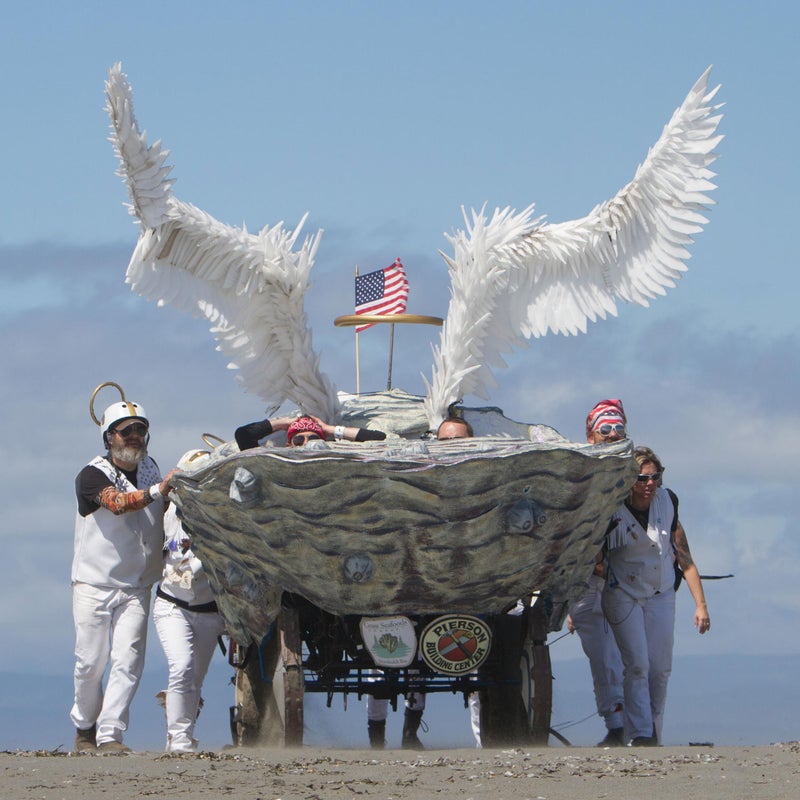
Due to differences in size and speed, the sculptures or “machines” quickly spread out along the course. Racers aim to log the fastest time, but there are a variety of other awards, such as the Pageantry Award, the Mediocre Award, and the Second-to-Last Award. The most-coveted accolade? The ACE, given to competitors who finish the entire course without exiting their machines. Teams must abide by a semi-strict set of rules to qualify for the prizes.
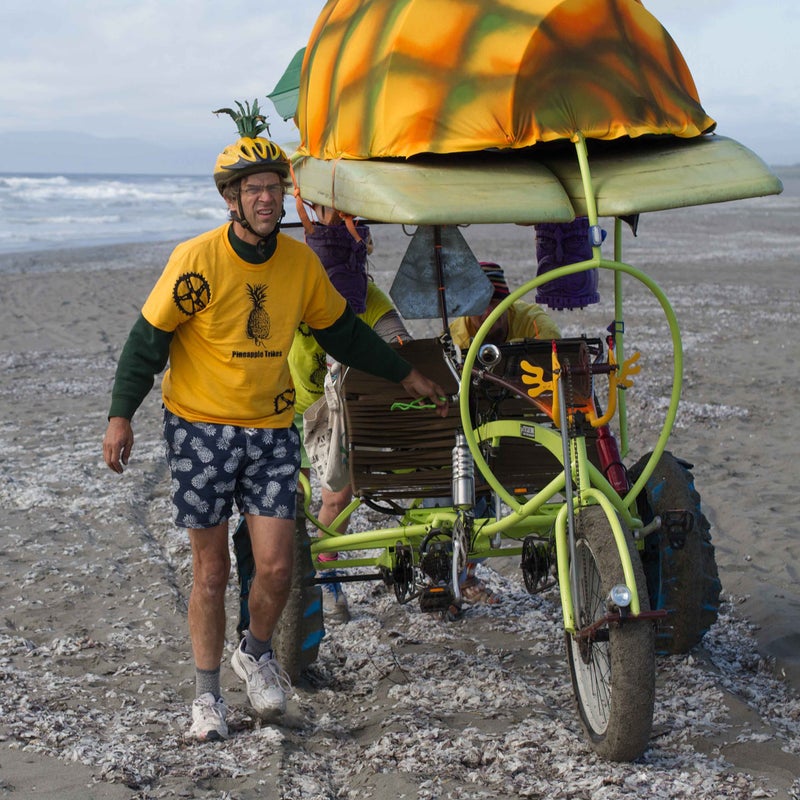
Various obstacles dot the 40-mile course. One of the most daunting is a steep sand dune called Dead Man’s Drop. Machines regularly flip or violently wreck before making it to the bottom. Fun Guy sped down the slope without a problem, though the sculpture broke down later and didn’t finish the race.
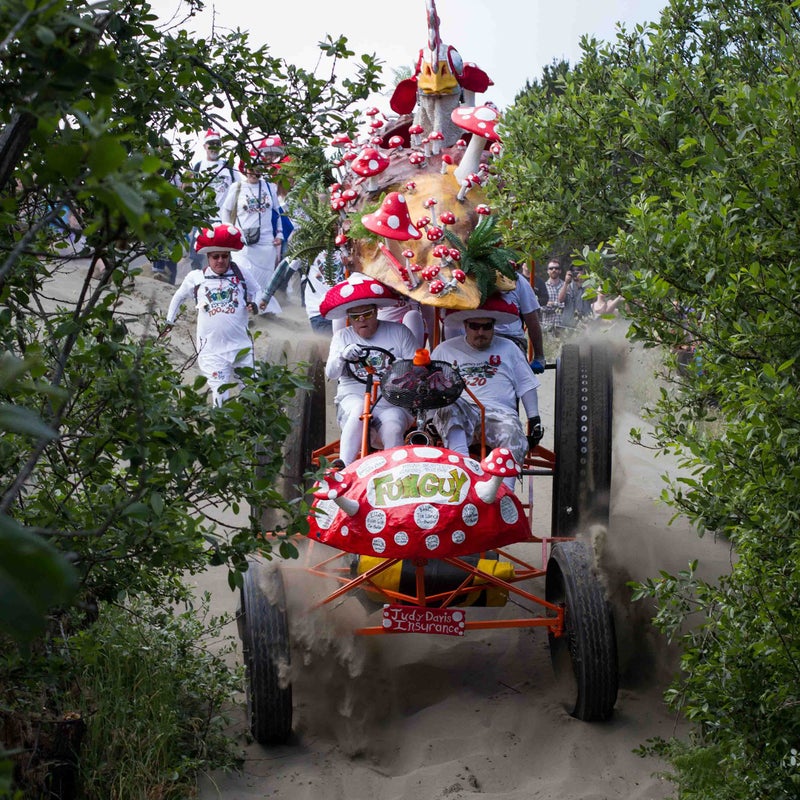
Various obstacles dot the 40-mile course. One of the most daunting is a steep sand dune called Dead Man’s Drop. Machines regularly flip or violently wreck before making it to the bottom. Fun Guy sped down the slope without a problem, though the sculpture broke down later and didn’t finish the race.
(Dylan Silver)The race is divided into three stages over three days. The second day brings racers to the edge of Humboldt Bay, where they roll into the water. Sculptures must float and need some sort of propulsion to finish the half-mile trip through the cold, murky water. Some racers don’t make it far from the launch ramp.
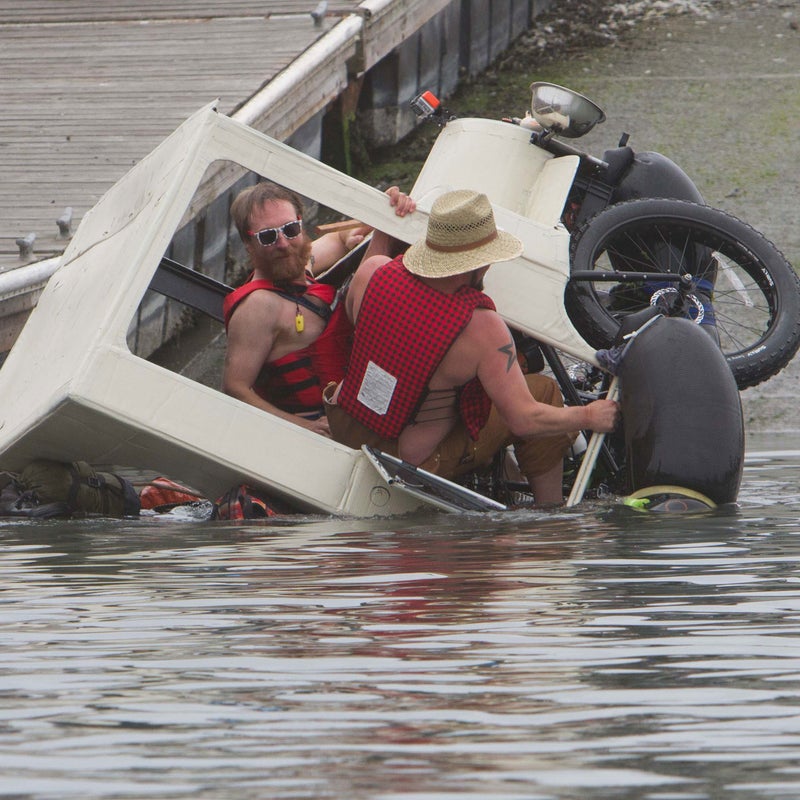
Rather than build a pedal-powered sculpture, some racers opt for simpler machines. Technically, competitors’ feet aren’t supposed to touch the ground. Though it doesn’t qualify for an ACE, roller-skating 40 miles has its own challenges.
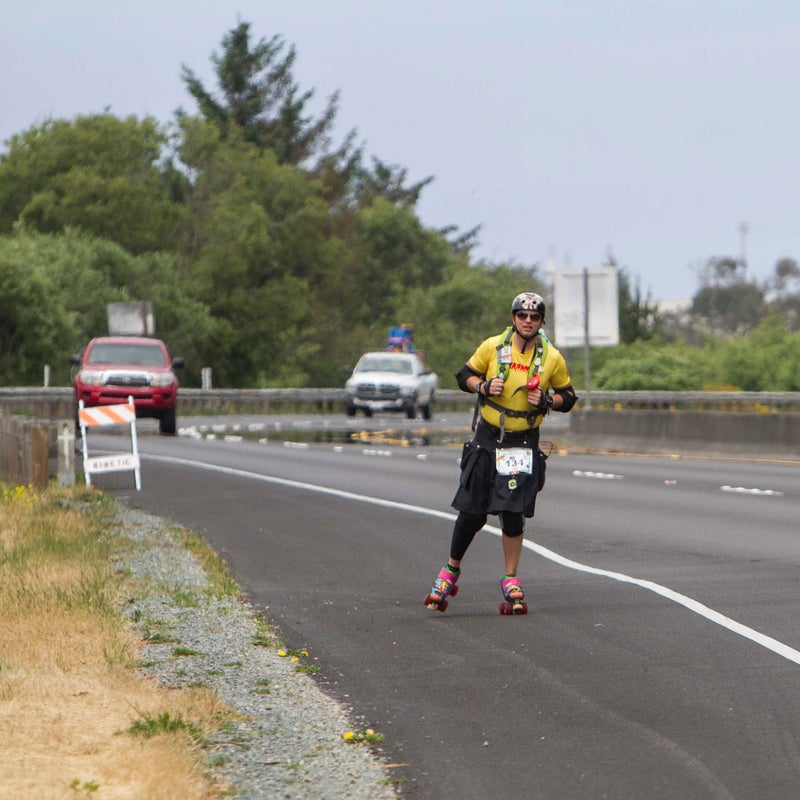
Much of the race takes place on rural county roads. The route forces sculptures up the Loleta Grade, a steep tree-lined climb. Most sculptures are geared low for sand and mud and have no problems on the hills.
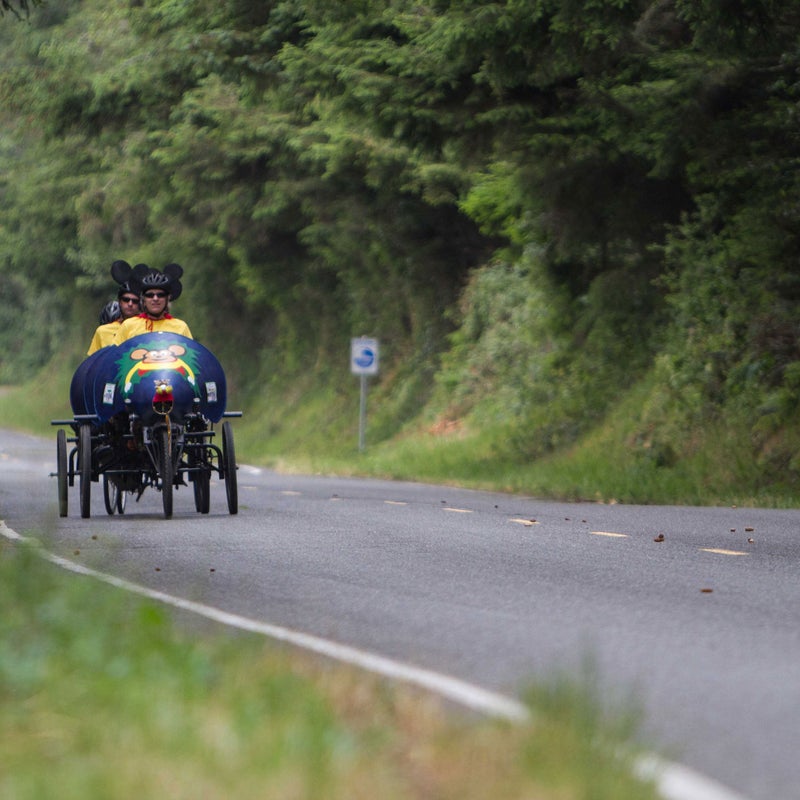
In the past, the Kinetic Grand Championship has had major sponsors, but today the nonprofit Kinetic Universe and a host of volunteers run the entire race. Several companies offer small sponsorships to different teams, but independent tinkerers who enjoy building functional art create most of the sculptures.
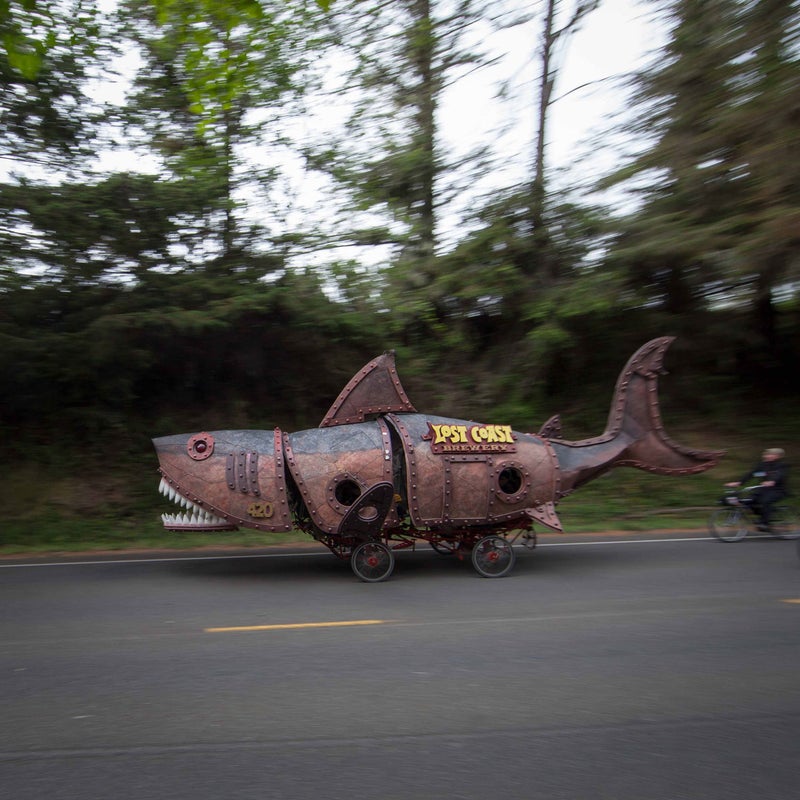
Twelve pilots pedaled A Whale of a Marriage to the finish line, where two members of the crew were married. Sculptures of every size make the trip. The largest was the 92-foot Yakima Kingfish,which raced through the late 1980s and early 1990s.
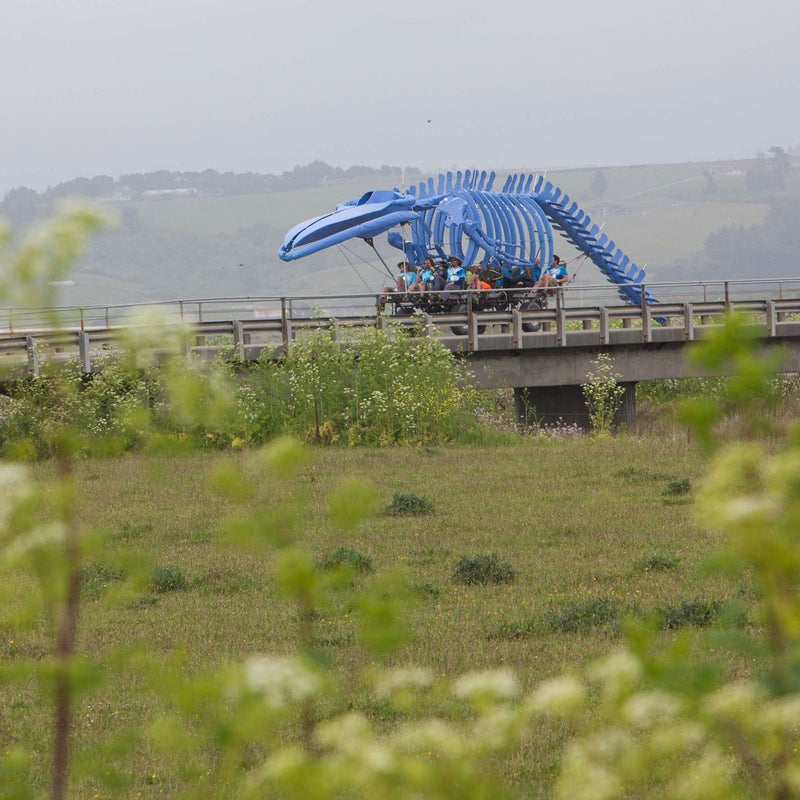
Twelve pilots pedaled A Whale of a Marriage to the finish line, where two members of the crew were married. Sculptures of every size make the trip. The largest was the 92-foot Yakima Kingfish,which raced through the late 1980s and early 1990s.
(Dylan Silver)The course changes every year. Obstacles are added or moved. In the aughts, for example, competitors were forced to cross an outdoor ice rink. This year, a muddy river crossing near the finish line almost destroyed several sculptures. Some teams opted to skip the obstacle in exchange for a time penalty.
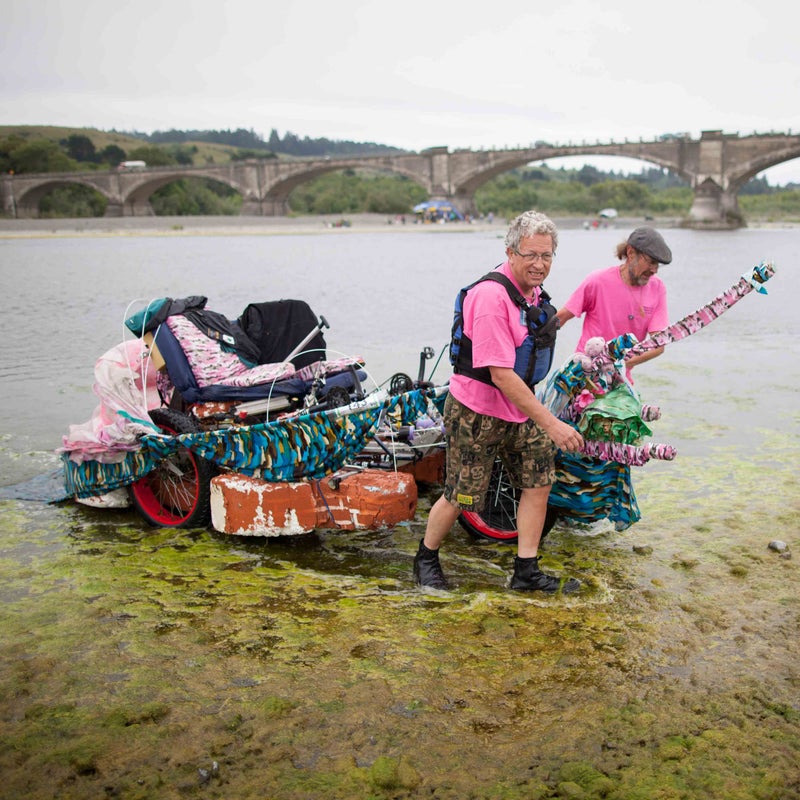
The race, though fun, is not easy. “This is a contact sport,” this pilot said after slipping from his sculpture Buggy for Glory. Medics were on site to treat everything from cuts and bruises to hypothermia and exhaustion.
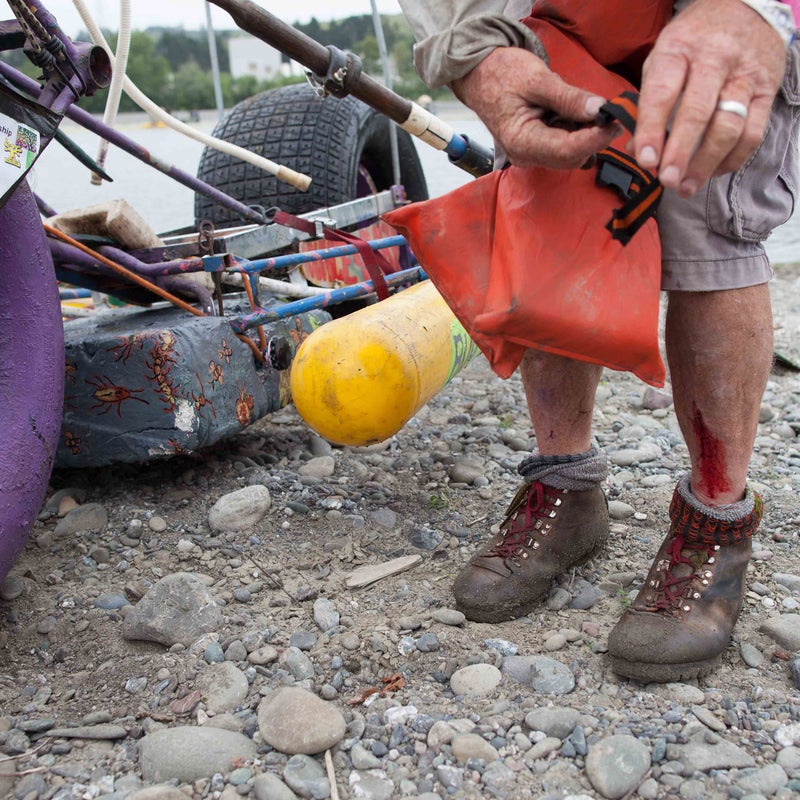
After three days of racing, competitors cross the finish line in the small town of Ferndale. Officials close the main street to let crowds welcome the sculptures.
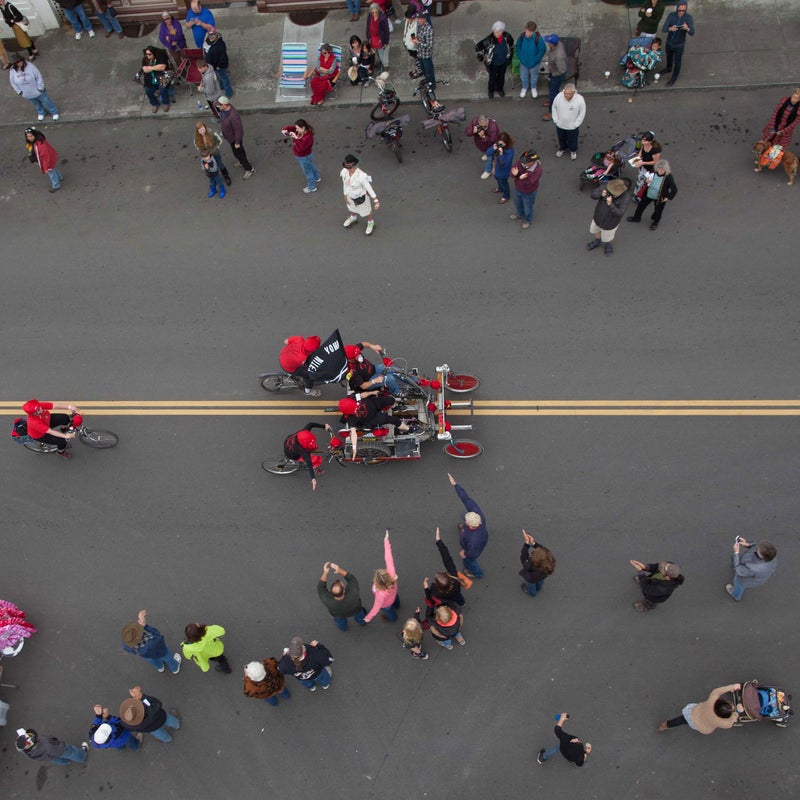
The Flaming Farmers do a loop before crossing the finish line. Of the 42 machines that entered this year’s race, only six managed to ACE the course. This year’s Grand Championship Award for the fastest time went to Tempus Fugitives: Drilling for Glory.
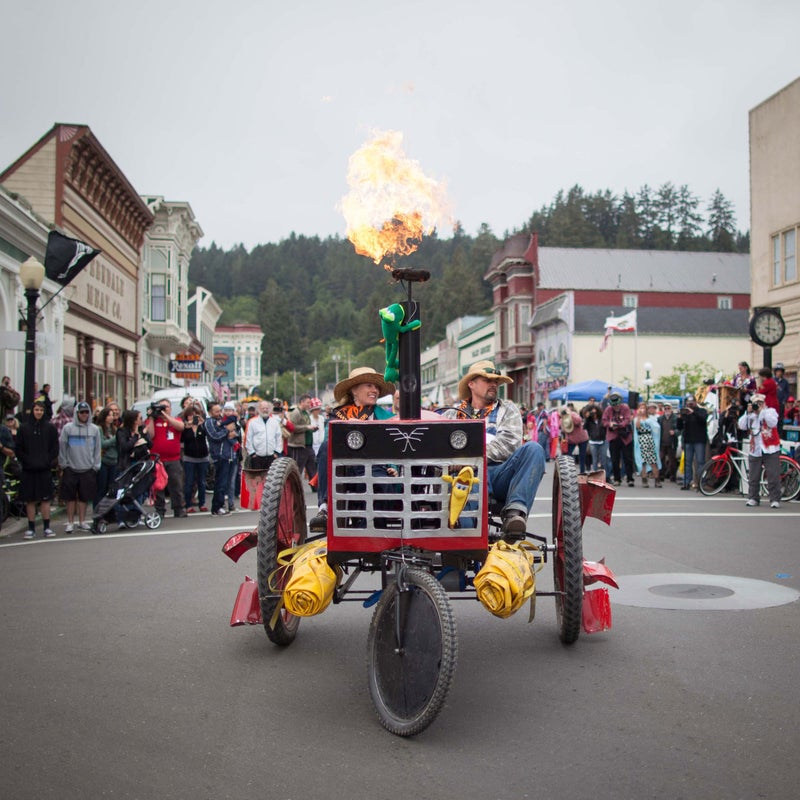
The Flaming Farmers do a loop before crossing the finish line. Of the 42 machines that entered this year’s race, only six managed to ACE the course. This year’s Grand Championship Award for the fastest time went to Tempus Fugitives: Drilling for Glory.
(Dylan Silver)A popular saying among racers: “For the glory!” Two members of the Kinetic Paranormal Society celebrate at the finish line. Rather than build a sculpture, this team dragged an armoire along the 40-mile course. Glorious indeed.
